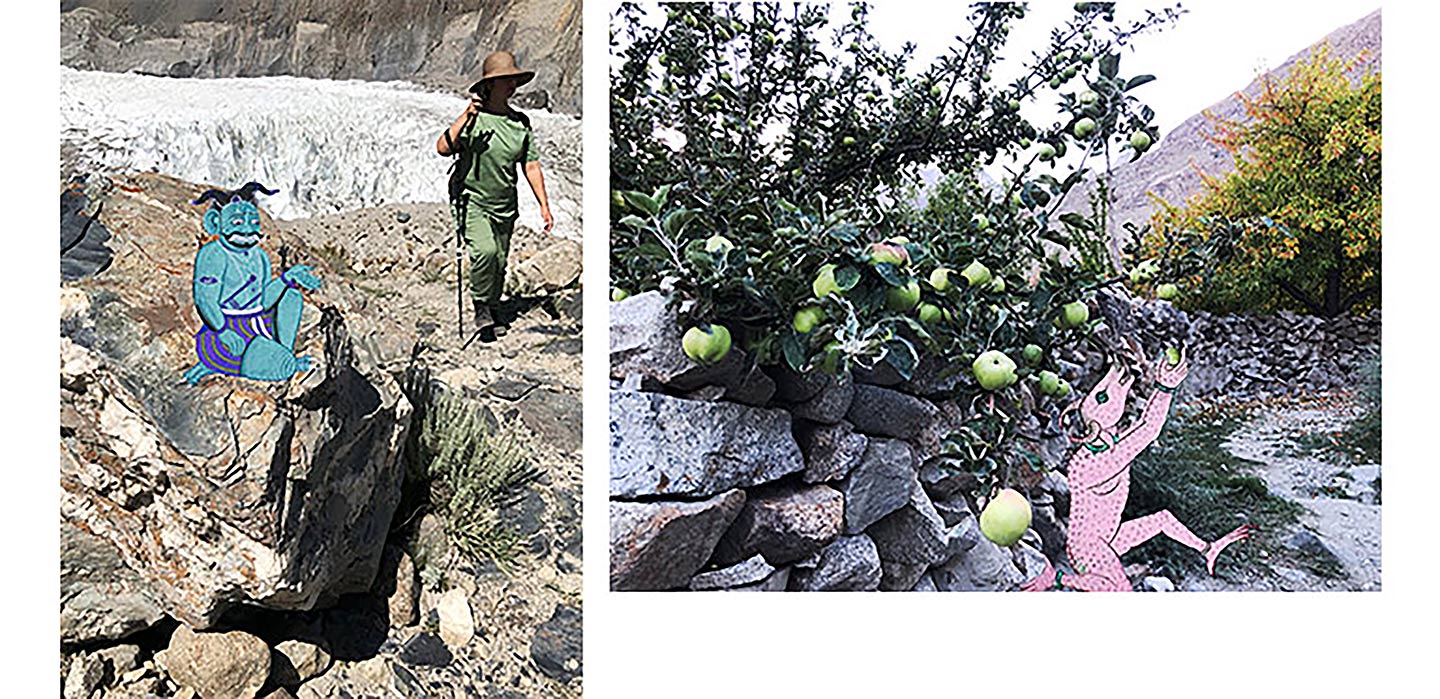Irrespective of context, when recounting supernatural and fantastical stories about their areas, most interviewees in Gulkin referred to supernatural beings as being gender neutral; they refused to acknowledge them as male or female yet insisted on

calling them Paris (fairies). These beings live in rocks, glaciers and forests but physical descriptions are deemed unnecessary. The incorporeal existence and continuity of Paris resides in the everyday life and rituals of people in the north, especially Hunza. To contextualize this series I refer to these spaces as Pari (Fairy) Spaces which are informed by what is referred to as Genius Loci* or an intangible spirit of a space. In contrast, corporeal presence of

supernatural and mythical creatures asserts itself in tangible form through manuscripts of divs, jinns and monsters that are found in Persian, Indian and medieval stories from the Arab world. By appropriating images of these beings from such manuscripts and inserting them in the natural and cultural landscape of Gulkin I highlight a vibrant history of transnational encounters that preceded modern nation states and may have informed the entire region.

Stories and ideas, both corporeal and incorporeal, travelled in various
forms across the Silk Route, cutting across geographies, landscapes,
territories. But what will happen if these ecologies and cultural
landscapes cease to exist?
*Genius Loci can be related to a Sense of Place, a concept used in
cultural heritage which refers to a historical environment defined by
place continuity, place distinctiveness and place dependency. I would
argue that it can be applied to vernacular heritage and natural heritage
as well such as in this case.